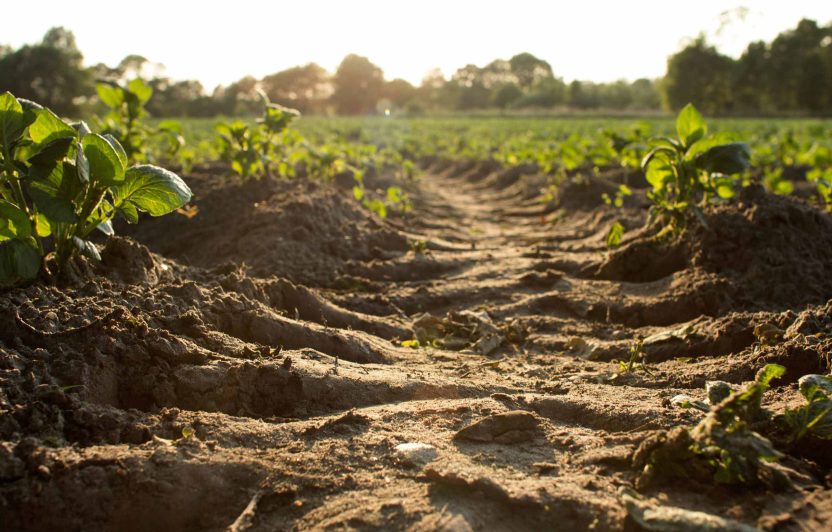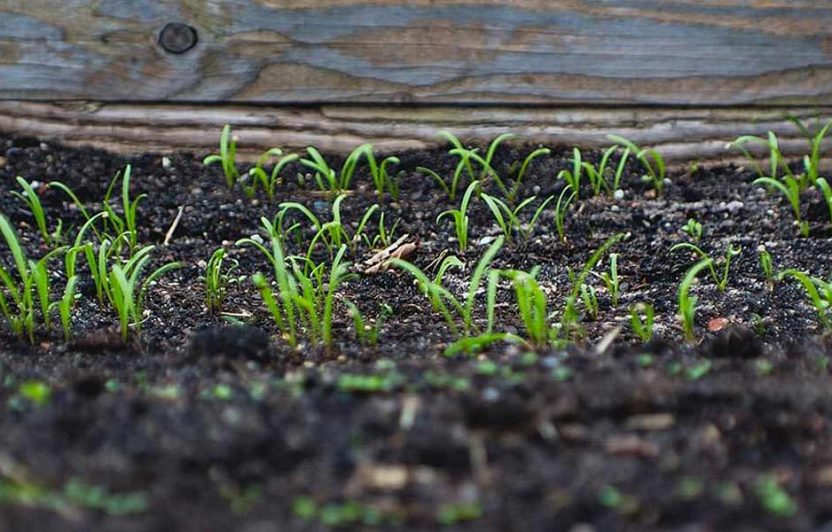When was the last time you dug into soil with your hands and let it crumble through your fingers? How did the it smell? Was it dry or moist? Did you feel and see organic material in it? We often take soil for granted and assume it is always available. Most of us see its surface but are unaware of the richness of life beneath our feet. At Biovision we are taking you along for a closer look at it – or rather, under it. For the next six months, soil will be the main topic of our publications. With fascinating stories and recent surprising findings from practice and science, we hope to convey a better understanding of the habitat under our feet and increase awareness of the need to care for and protect soil better.
Soil: the basis for life
Soil is the living top layer of Earth’s crust. It is a few centimeters to several meters thick and consists of minerals, humus, water, air and organisms. It takes a very long time to form: one millimeter about 150 years, and 30 centimeters up to 10,000 years. A healthy soil has a well-developed structure. Its particles are arranged such that there are sufficiently large gaps, called pores, that store water and allow air to circulate. Depending on the type (for example, sand, peat or clay), pores make up to 80% of a soil’s volume. These in-between spaces provide a habitat for billions of tiny living organisms. If you were to line up the surfaces of the individual pores of a handful of clay soil, the result would be a field over one square kilometer in size – over 20,000 times larger than the average Swiss person’s living area.
A complex ecosystem, the soil provides a habitat for plants, animals and humans. Plant roots and fungal filaments form a huge underground network in it. This enables them to supply each other with nutrients and water and to communicate. Countless creatures, such as worms, beetles, insect larvae, fungi, bacteria and algae, interact with the soil and contribute to the ecosystem. They each play a special role, for example enhancing soil fertility by decomposing dead plants and animals.
Our soils are disappearing
As important as fertile soil is for our survival, we possess only incomplete knowledge about it and a very low level of awareness of how endangered this resource is. Fertile soils are lost worldwide every day. 75% of the earth’s land areas are already degraded, meaning they are partially or completely infertile: this was the conclusion reached in 2015 by the Intergovernmental Science-Policy Platform on Biodiversity and Ecosystem Services (IPBES) in a first global scientific survey on the state of Earth’s soils (“Assessment Report on Land Degradation and Restoration”, 2015). These degraded areas, which have become deserts, polluted, deforested and converted to intensive agricultural use, are also the main cause of species extinction. If the trend continues unchecked, 95% of Earth’s land could be degraded in less than 30 years.
It is high time to act
Although humans do not directly consume soil, more than 95% of our food grows on it. The careful and responsible use of this natural resource is therefore central to Biovision’s mission. In our projects, we promote conserving and enhancing soil fertility as well as disseminating knowledge and applying principles of agroecology. Since 2018, Biovision has also been promoting public awareness in Switzerland about the importance of healthy, fertile soils in its project “Sounding Soil“.
There is nevertheless an urgent need for more educational work on the topic of soil protection. Decision makers in politics and industry must ultimately take action and implement protection measures. It is not too late, but the clock is ticking. It is high time we grant more attention and protection to the precious resource of soil.





